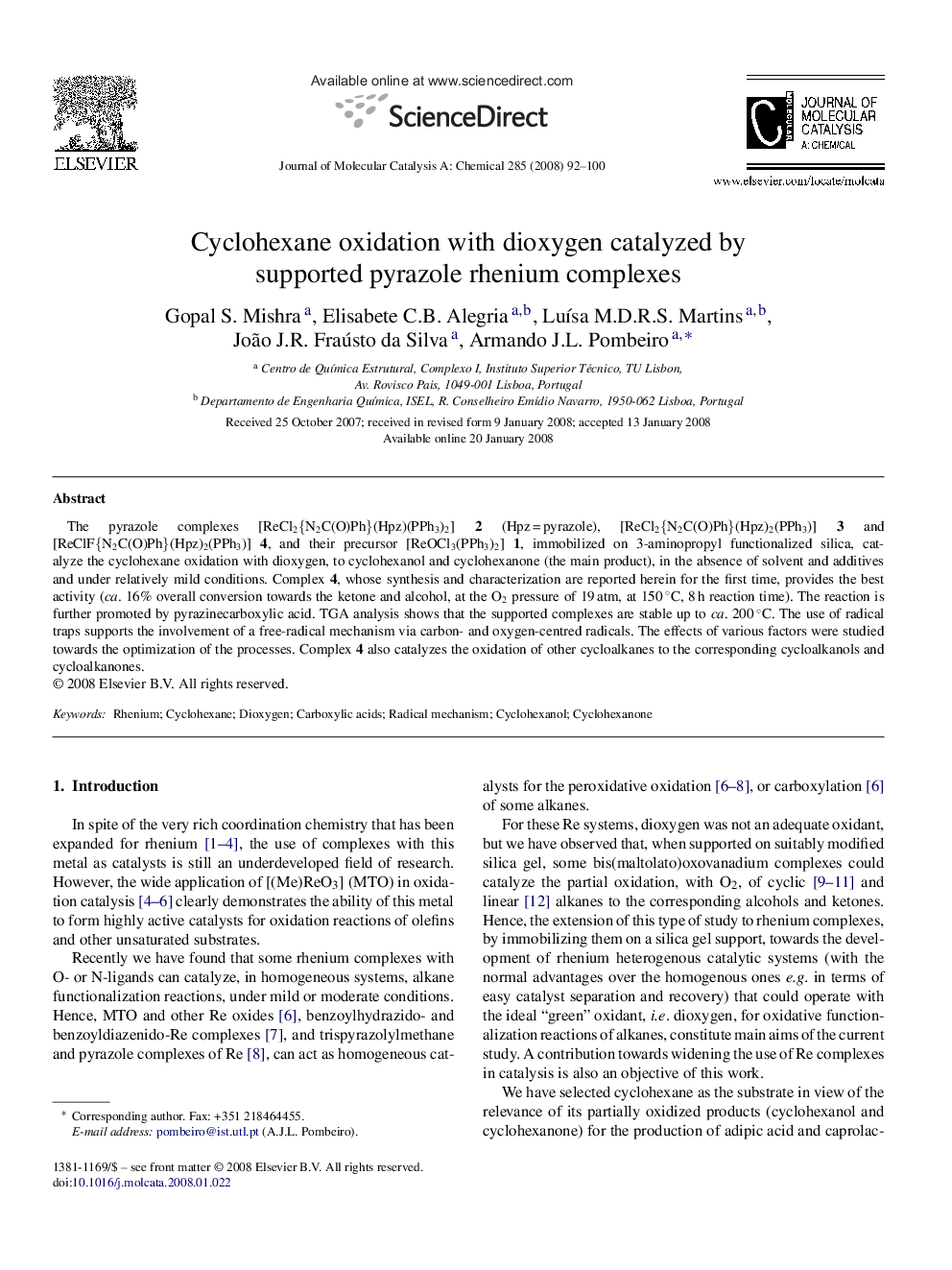| Article ID | Journal | Published Year | Pages | File Type |
|---|---|---|---|---|
| 68306 | Journal of Molecular Catalysis A: Chemical | 2008 | 9 Pages |
The pyrazole complexes [ReCl2{N2C(O)Ph}(Hpz)(PPh3)2] 2 (Hpz = pyrazole), [ReCl2{N2C(O)Ph}(Hpz)2(PPh3)] 3 and [ReClF{N2C(O)Ph}(Hpz)2(PPh3)] 4, and their precursor [ReOCl3(PPh3)2] 1, immobilized on 3-aminopropyl functionalized silica, catalyze the cyclohexane oxidation with dioxygen, to cyclohexanol and cyclohexanone (the main product), in the absence of solvent and additives and under relatively mild conditions. Complex 4, whose synthesis and characterization are reported herein for the first time, provides the best activity (ca. 16% overall conversion towards the ketone and alcohol, at the O2 pressure of 19 atm, at 150 °C, 8 h reaction time). The reaction is further promoted by pyrazinecarboxylic acid. TGA analysis shows that the supported complexes are stable up to ca. 200 °C. The use of radical traps supports the involvement of a free-radical mechanism via carbon- and oxygen-centred radicals. The effects of various factors were studied towards the optimization of the processes. Complex 4 also catalyzes the oxidation of other cycloalkanes to the corresponding cycloalkanols and cycloalkanones.
Graphical abstractPyrazole rhenium complexes immobilized on 3-aminopropyl functionalized silica catalyze the cyclohexane oxidation with dioxygen to cyclohexanol and cyclohexanone (the main product with a good selectivity), in the absence of solvent and additives and under relatively mild conditions. The reaction is promoted by pyrazinecarboxylic acid.Figure optionsDownload full-size imageDownload as PowerPoint slide
